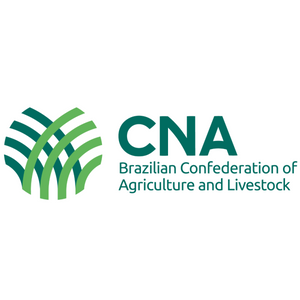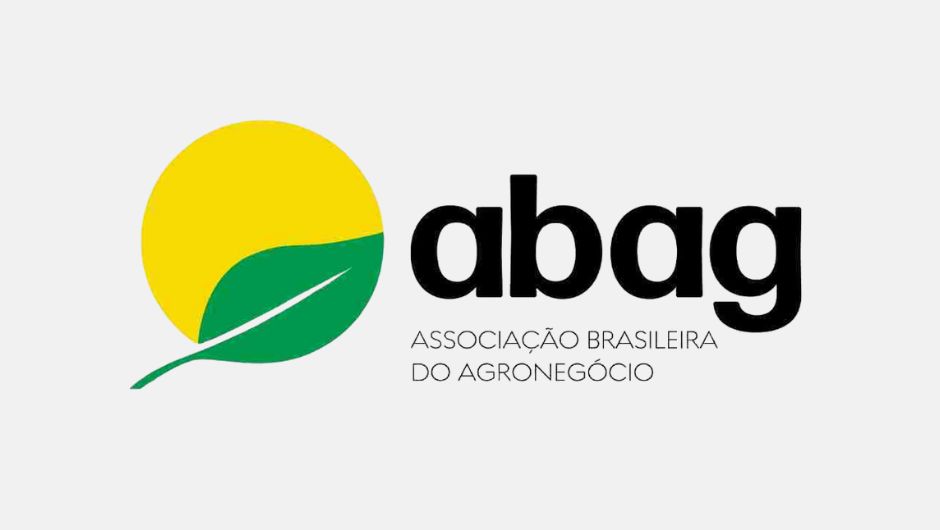Background
The Brazilian Agricultural Research Corporation (Embrapa) is a Brazilian public company linked to the Ministry of Agriculture and Livestock (Mapa), which is primarily focused on large-scale production, competitiveness and exports.
Embrapa’s objective is to “enable research, development, and innovation solutions for the sustainability of agriculture (…) for the benefit of Brazilian society.”1“Embrapa Cassava & Fruits,” Embrapa. Archived November 4, 2025. Archive URL: https://archive.ph/rLhGT
Founded in 1973, Embrapa has centres all over Brazil and over 7,770 employees, of whom nearly 2,200 are researchers.2“Dados cadastrais,” Embrapa. Archived June 6, 2025. Archive URL: https://archive.ph/uQd7t Its projects range from support for agribusiness, on cattle breeding and soybean seed development,3“Melhoramento genético,” Embrapa. Archived November 9, 2025. Archive URL: https://archive.ph/Ujjf6 4“Embrapa Soybean,” Embrapa. Archived July 15, 2025. Archive URL: https://archive.ph/EDCCB to initiatives aimed at boosting productivity on small family farms with integrated cultivation of cassava, corn, rice, and beans.5“Sustainable Farm (Roça): Transform Your Family Farming with Embrapa!,” YouTube video uploaded by user Embrapa, October 31, 2025. Archived .mp4 on file at DeSmog.
Primarily funded by Brazil’s federal budget, 6“Embrapa’s General Assembly,” Embrapa. Archived June 12, 2025. Archive URL: https://archive.ph/bW7fL Embrapa increasingly seeks resources from external and private sources for its research and development projects due to government funding cuts in recent years. 7Hélen Freitas. “Captação de dinheiro do agro pela Embrapa gera preocupação sobre transparência,” Repórter Brasil, June 4, 2024. Archived January 16, 2025. Archive URL: https://archive.ph/jod8f
Embrapa has partnerships with various large industrial food and farming firms, including Bayer, Marfrig, and Cargill. It provides technical support to Brazilian meat corporation JBS, which is estimated to be the highest-emitting meat copmany in the world.8“Emissões do Brasil têm maior queda em 15 anos,” Observatório de Clima, November 7, 2024. Archived August 19 2025. Archive URL: https://archive.ph/xGLdB 9“Roasting the Planet: Big Meat and Dairy’s Big Emissions,” Foodrise, Friends of the Earth,Greenpeace Nordic, and IATP, October 2025. Archived November 9, 2025. Archived .pdf on file at DeSmog.
Embrapa has also provided research services for other large companies, such as the pesticide firm Syngenta.10Hélen Freitas, “Captação de dinheiro do agro pela Embrapa gera preocupação sobre transparência,” Repórter Brasil, June 4, 2024. Archived January 16, 2025. Archive URL: https://archive.ph/jod8f Embrapa earned approximately $26.7 million from such partnerships between 2018 and 2024.11Hélen Freitas. “Captação de dinheiro do agro pela Embrapa gera preocupação sobre transparência,” Repórter Brasil, June 4, 2024. Archived January 16, 2025. Archive URL: https://archive.ph/jod8f
Some research methodologies developed by Embrapa have been used in company literature to overstate the green credentials of farming operations.12“The New Merchants of Doubt,” Changing Markets, 2024. Archived September 8, 2025. Archived .pdf on file at DeSmog. For example, JBS and other livestock industry groups planned to use Embrapa’s work on tropical agriculture and low-carbon livestock ahead of the COP30 climate summit in Brazil in November 2025, to suggest that pollution from cattle can be offset by soil-carbon sequestration on farms, making the sector “sustainable” and “climate neutral”.13Clarice Couto, “World’s Largest Meat Supplier Seeks Green Credentials for Brazil at COP30,” Bloomberg, August 11, 2025. Archived .pdf on file at DeSmog. Archive URL: https://archive.ph/8koR7 14Gabriella Weiss, “Agribusiness leaders seek unified message for COP30,” Valor International, April 24, 2025. Archived April 25, 2025. Archive URL: https://archive.ph/yx26x Scientists say soil sequestration cannot come close to offsetting livestock’s emissions in the region.15Yue Wang, Imke J. M. de Boer, U. Martin Persson, Raimon Ripoll-Bosch, Christel Cederberg, Pierre J. Gerber, Pete Smith & Corina E. van Middelaar. “Risk to rely on soil carbon sequestration to offset global ruminant emissions,” Nature Communications Vol. 14, November 2023. Archived September 13, 2025. Archived .pdf on file at DeSmog.
Embrapa also developed the “Carbon-Neutral Beef” certification,16R. G de Almeida and F. V. Alves. “Diretrizes Técnicas para Produção de Carne com Baixa Emissão de Carbono Certificada em Pastagens Tropicais: Carne Baixo Carbono (CBC),” Embrapa, 2020. Archived June 26, 2025. Archived .pdf on file at DeSmog. which campaign group Changing Markets has claimed is based on “dubious” science. Embrapa has said that the protocol is “scientifically grounded and follows metrics recognized by the best available science.”17Rachel Sherrington and Hazel Healy, “Look Out for These 8 Big Ag Greenwashing Terms at COP30,” DeSmog, October 26, 2025. Archived November 10, 2025. Archive URL: https://archive.ph/CpksT
In July 2025 it was announced that Embrapa would host the Agrizone “house for sustainable agriculture”, at the headquarters of Embrapa Eastern Amazon in Belém, alongside the COP30 events. The Agrizone has attracted criticism for its corporate sponsors,18Hélen Freitas. “COP30: Agribusiness to contest climate crisis narrative at the privately-funded Agrizone,” Repórter Brasil, October 21, 2025. Archived November 9, 2025. Archive URL: https://archive.ph/wKXkh which include the Brazilian agribusiness farming union CNA, Nestlé, and Bayer.
Embrapa has rejected the accusation that the Agrizone is a showcase for agribusiness.19“Nota de esclarecimento sobre a AgriZone, um espaço público, plural e sustentável da COP30 – Official statements,” Embrapa, November 5, 2025. Archived November 9, 2025. Archive URL: https://archive.ph/DTk8p The Agrizone is a “public, pluralistic and sustainable space,” it said in a statement, adding: “As a public company, we must serve society in its different audiences, and contribute to building a sustainable future based on science. This science takes many forms, including the more traditional ones associated with indigenous territories and peoples, and others based on large-scale production technologies.”
Stance on Climate Change
Since 2010, Embrapa has adopted a discourse focused on environmental issues.20“Timeline,” Embrapa. Archived September 13, 2024. Archive URL: https://archive.ph/d5CFu While acknowledging the reality of climate change, Embrapa has also said that meeting Brazil’s international climate commitments would be an “immense challenge”.
Embrapa recognises the negative impacts of climate change on agriculture.21“Project Portfolio: Climate change,” Embrapa. Archived November 9, 2025. Archive URL: https://archive.ph/s8et1 “Agriculture is one of the production sectors most strongly affected by climate change stemming from global warming,” the organization states on its website, adding that farming is badly affected by “the occurrence of extreme events, such as long periods of drought, heat and cold waves, and alterations in the rainfall regime”.
Much of Embrapa’s research focuses on the livestock sector. As well as being the primary driver of land use change in Brazil — which is responsible for 49 percent of the country’s total emissions footprint — livestock is the main emitter of the powerful greenhouse gas methane in the country, with belches from cows responsible for 19 percent (405 million tonnes of carbon dioxide equivalent, or CO2e) of Brazil’s emissions, according to a 2023 analysis from Brazilian research group the Climate Observatory.22“ESTIMATIVA DE EMISSÕES DE 2023 GASES DE EFEITO ESTUFA DOS SISTEMAS ALIMENTARES NO BRASIL,” SEEG and Observatório do Clima (Climate Observatory), October 2023. Archived May 27, 2025. Archived .pdf on file at DeSmog.
Embrapa’s Beef Intelligence Centre (Cicarne) has campaigned for Brazil to adopt GWP*,23Maximiliano Manzoni, “Embrapa abraça plano do agro para maquiar o impacto climático da pecuária,” Intercept Brasil, September 18, 2025. Archived October 8, 2025. Archive URL: https://archive.ph/9shII a controversial new metric for measuring the climate impact of methane.24Orla Dwyer, “Q&A: What the ‘controversial’ GWP* methane metric means for farming emissions,” Carbon Brief, October 3, 2025. Archived October 4, 2025. Archive URL: https://archive.ph/ULxpG Critics say that adopting this standard would allow heavy emitters, like the livestock industry, to mask their contribution to global warming.25Joe Fassler, “Research Undermines Claims that Soil Carbon Can Offset Livestock Emissions,” DeSmog, February 1, 2024. Archived August 18, 2025. Archive URL: https://archive.ph/Tuc7Z
Embrapa does not appear to conduct livestock farming research, or advocate approaches which consider any reduction in cattle herds, or a transition away from intensive, and increasing, beef production. Brazil is home to 236 million cattle, and the world’s largest beef exporter. Experts say, in order to be aligned with Paris goals, emissions from livestock need to be cut by 50 percent by the end of the decade.26“Options for a Paris-Compliant Livestock Sector,” Brooks McCormick Jr. Animal Law & Policy Program Harvard Law School, March 2024. Archived .pdf available at DeSmog.
Embrapa’s approach to bringing down livestock emissions relies on technology — as embodied in its “low carbon” and “carbon neutral” certifications for cattle.27R. G de Almeida and F. V. Alves. “Diretrizes Técnicas para Produção de Carne com Baixa Emissão de Carbono Certificada em Pastagens Tropicais: Carne Baixo Carbono (CBC),” Embrapa, 2020. Archived June 26, 2025. Archived .pdf on file at DeSmog. These methodologies rely on a number of techniques to reduce cattle emissions, including farming that encourages carbon sequestration in the soil through so-called “integrated systems” which encourage the growing of crops and trees on farms, to recover pastures and increase soil carbon sequestration.
Embrapa also promotes the use of new breeds and genetic improvements to cattle, and other “good management practices” to “contribute to the reduction of greenhouse gases in livestock farming and ensure the sustainable development of the sector.”28Primavesi et al., “Aquecimento global e mudanças climáticas: uma visão integrada tropical,” Embrapa, 2007. Archived April 29, 2025. Archived .pdf on file at DeSmog.
While integrated systems are heavily promoted in Brazil, studies show that soil cannot offset livestock’s carbon emissions at the scale that is needed to cancel out pollution.29Wang et al., “Risk to rely on soil carbon sequestration to offset global ruminant emissions,” Nature Communications, 2023. DOI: https://doi.org/10.1038/s41467-023-43452-3 Archived .pdf on file at DeSmog. Studies have also found that intensification of livestock is not a climate solution, and that efforts to cut emissions from livestock will need to include reductions in feed production, and in herd sizes in both middle- and high-income nations, as well as a shift to more plant-based diets in these countries.30Harwatt et al., “Options for a Paris-Compliant Livestock Sector,” Harvard Law School, March 2024. Archived September 23, 2025. Archived .pdf on file at DeSmog.
Key Actions
August 2025
Embrapa works on a sustainable farming initiative with the world’s largest meat company, JBS. Fazenda Roncador, located in Querência, State of Mato Grosso, is considered the largest farm in the country with more than 70,000 head of cattle.31“Conheça a maior fazenda do Brasil, a Fazenda Roncador!,” Grupo Roncador, July 12, 2020. Archived October 7, 2025. Archive URL: https://archive.ph/xM70h According to JBS’ CEO Gilberto Tomazoni, the property is a successful showcase of sustainable practices and carbon capture in agriculture. The farm’s greenhouse gas capture data from the past 10 years were validated by Embrapa.32Clarice Couto, “World’s Largest Meat Supplier Seeks Green Credentials for Brazil at COP30,” Bloomberg, August 11, 2025. Archived .pdf on file at DeSmog. Archive URL: https://archive.ph/8koR7
The company plans to present the study’s findings at COP30 to argue that cattle are not as harmful to the environment as it has been portrayed.33Clarice Couto, “World’s Largest Meat Supplier Seeks Green Credentials for Brazil at COP30,” Bloomberg, August 11, 2025. Archived .pdf on file at DeSmog. Archive URL: https://archive.ph/8koR7 According to Tomazoni, the Roncador case indicates that “the way carbon emissions are currently calculated is flawed, as it considers only emissions and not the gases captured throughout the entire production process.”
July 2024
Embrapa developed the “Carbon Neutral Beef certification”, which was granted to Marfrig, the second largest beef company in Brazil.34“The New Merchants of Doubt,” Changing Markets, 2024. Archived September 8, 2025. Archived .pdf on file at DeSmog.
According to The New Merchants of Doubt report by Changing Markets, the seal is based on “dubious” science. The document also points out that this type of certification has been used by the industry “to give a green veneer to its products and overshadow the real environmental impacts of its business model.”
Embrapa has said that the protocol is “scientifically grounded and follows metrics recognized by the best available science”.35Rachel Sherrington and Hazel Healy, “Look Out for These 8 Big Ag Greenwashing Terms at COP30,” DeSmog, October 26, 2025. Archived November 10, 2025. Archive URL: https://archive.ph/CpksT
February 2024
Embrapa was funded by the world’s largest agrochemical company Syngenta to produce a three-year study into the use of the pesticide thiamethoxam, which is banned in the European Union due to its high toxicity for bees and other pollinators.36Hélen Freitas. “Captação de dinheiro do agro pela Embrapa gera preocupação sobre transparência,” Repórter Brasil, June 4, 2024. Archived January 16, 2025. Archive URL: https://archive.ph/jod8f
The research followed a report by Repórter Brasil that Syngenta exported to Brazil more than 6,000 tons of thiamethoxam, according to data from the Swiss organization Public Eye and the investigative journalism agency Unearthed.37Hélen Freitas, “Ibama restringe uso de agrotóxico letal a abelhas, o tiametoxam,” Repórter Brasil, February 23, 2024. Archived August 29, 2025. Archive URL: https://archive.ph/pEYqO
Embrapa’s research found that the product was not harmful to bees, if used according to instructions, and its findings were used by Syngenta in campaigns in defense of thiamethoxam.38Hélen Freitas. “Captação de dinheiro do agro pela Embrapa gera preocupação sobre transparência,” Repórter Brasil, June 4, 2024. Archived January 16, 2025. Archive URL: https://archive.ph/jod8f
The multinational, however, neglected to mention that the results were limited to coffee cultivation, or that the study had been conducted on farms certified by Syngenta itself, and under controlled conditions, which are uncommon in everyday farming.
Syngenta told Repórter Brasil that during the re-evaluation process of thiamethoxam, it “produced and submitted years’ worth of studies, which involved several researchers who provided solid scientific evidence to demonstrate the product’s safety.”39“Posicionamentos enviados para a reportagem sobre reavaliação do tiametoxam,” Repórter Brasil, February 16, 2024. Archived February 13, 2025. Archive URL: https://archive.ph/abGna
2022-present
Cicarne, Embrapa’s Beef Intelligence Unit, has campaigned for Brazil to adopt GWP*,40Maximiliano Manzoni, “Embrapa abraça plano do agro para maquiar o impacto climático da pecuária,” Intercept Brasil, September 18, 2025. Archived October 8, 2025. Archive URL: https://archive.ph/9shII a new metric for measuring the climate impact of methane, a short-lived powerful greenhouse gas, which is emitted by the digestive tract of cattle and other ruminant livestock.
Critics say that adopting this standard, which has been rejected by the UN’s Intergovernmental Panel on Climate Change (IPCC) that provides the scientific assessments that inform COP negotiations,41“IPCC AR6 WGIII Second Order Draft Government and Expert Review Comments Responses (Annex II – Definitions, units and conventions,” IPCC. Archived September 28, 2025. Archived .pdf on file at DeSmog. will allow large polluters in the livestock industry to mask their contribution to global warming.42Orla Dwyer, “Q&A: What the ‘controversial’ GWP* methane metric means for farming emissions,” Carbon Brief, October 3, 2025. Archived October 4, 2025. Archive URL: https://archive.ph/ULxpG
The attempt to change the methane emissions metric is part of a global push, led by U.S. agribusiness associations.43Zach Boren, “How the beef industry is trying to change the maths of climate change,” Unearthed, March 9, 2022. Archived October 4, 2025. Archive URL: https://archive.ph/CHO2n
Embrapa said: “Discussions on SLCPs [short-lived climate pollutants] should continue to be the subject of scientific meetings before being adopted or abandoned. Embrapa considers that divergence and debate are fundamental parts of scientific development and should be based on arguments grounded in scientific evidence.”
Lobbying
As a publicly funded scientific institution, Embrapa doesn’t take part in lobbying.
Embrapa is susceptible to pressure from private entities to favour their interests, whether through sponsored research, or via influence exerted on Brazil’s Ministry of Agriculture and Livestock, which houses Embrapa.44Hélen Freitas. “Captação de dinheiro do agro pela Embrapa gera preocupação sobre transparência,” Repórter Brasil, June 4, 2024. Archived January 16, 2025. Archive URL: https://archive.ph/jod8f
A 2024 report by Repórter Brasil revealed that lobbyists and business figures connected to agribusiness were among the most frequent visitors to Mapa, enjoying privileged access to the ministry.45Hélen Freitas, “Lobistas e empresários têm acesso ‘sigiloso’ ao Ministério da Agricultura,” Repórter Brasil, August 28, 2024. Archived August 18, 2025. Archive URL: https://archive.ph/djWCY
Funding
Embrapa is primarily funded by Brazil’s federal budget, as a public company linked to the Ministry of Agriculture.46“Embrapa’s General Assembly,” Embrapa. Archived June 12, 2025. Archive URL: https://archive.ph/bW7fL As of 2025, Embrapa had a budget from the Federal Government of R$364 million ($67 million).
However, the company also seeks resources from external and private sources for its research and development projects. According to a report by Repórter Brasil published in June 2024, Embrapa has been increasingly relying on studies funded by the agribusiness sector to the tune of R$145 million (approx. $26.8 million) over five years.47Hélen Freitas. “Captação de dinheiro do agro pela Embrapa gera preocupação sobre transparência,” Repórter Brasil, June 4, 2024. Archived January 16, 2025. Archive URL: https://archive.ph/jod8f
In March 2025, the Brazilian Confederation of Agriculture and Livestock (CNA) made a donation of R$100 million ($18 million) “to support Embrapa’s initiatives.”48Taísa Medeiros. “CNA anuncia doação de R$ 100 milhões para pesquisas da Embrapa,” CNN Brasil, March 25. 2025. Archived April 12, 2025. Archive URL: https://archive.ph/MHf1b The CNA is the largest representative entity of Brazilian agribusiness. Among the other agribusiness giants with which Embrapa establishes partnerships are Bayer, JBS (especially through the JBS Fund for the Amazon), Cargill, Marfrig, commodities trader Bunge, Syngenta, and agrochemical firm BASF.
In February 2024 Embrapa obtained R$20.3 million ($4 million) in funding from deputies who are members of the Parliamentary Front of Agribusiness (FPA) — Brazil’s powerful parliamentary caucus representing the sector.49Gabriel Faria, “Embrapa cria plataforma com métricas de carbono adaptadas às condições tropicais,” Embrapa, February 5, 2024. Archived August 4, 2024. Archive URL: https://archive.ph/3katf
Affiliations
Embrapa is affiliated with the Ministry of Agriculture and Livestock (Mapa), to which it is linked as a public company.50“About Embrapa,” Embrapa. Archived August 9, 2025. Archive URL: https://archive.ph/5roKz The federal government of Brazil is Embrapa’s sole shareholder.
Mapa is primarily focused on agribusiness, handling policies for large-scale production, exports and sector competitiveness.51Ministry of Agriculture and Livestock. “Home,”gov.br. Archived October 7, 2025. Archive URL: https://archive.ph/6jOux Meanwhile, MDA (Ministry of Agrarian Development and Family Farming) focuses on family farming and land reform, promoting social inclusion, technical support, and credit for small producers and rural communities.52“Ministério do Desenvolvimento Agrário e Agricultura Familiar,” gov.br. Archived September 9, 2025. Archive URL: https://archive.ph/TDC5u
Embrapa also appears as an affiliate of the Brazilian Agribusiness Association (Abag), according to the organization’s website.53“Associadas,” Abag. Archived August 4, 2025. Archive URL: https://archive.ph/LIYjL The Association represents agribusiness giants such as Bayer, Cargill, and JBS.
Resources
- 1“Embrapa Cassava & Fruits,” Embrapa. Archived November 4, 2025. Archive URL: https://archive.ph/rLhGT
- 2
- 3
- 4
- 5“Sustainable Farm (Roça): Transform Your Family Farming with Embrapa!,” YouTube video uploaded by user Embrapa, October 31, 2025. Archived .mp4 on file at DeSmog.
- 6“Embrapa’s General Assembly,” Embrapa. Archived June 12, 2025. Archive URL: https://archive.ph/bW7fL
- 7Hélen Freitas. “Captação de dinheiro do agro pela Embrapa gera preocupação sobre transparência,” Repórter Brasil, June 4, 2024. Archived January 16, 2025. Archive URL: https://archive.ph/jod8f
- 8“Emissões do Brasil têm maior queda em 15 anos,” Observatório de Clima, November 7, 2024. Archived August 19 2025. Archive URL: https://archive.ph/xGLdB
- 9“Roasting the Planet: Big Meat and Dairy’s Big Emissions,” Foodrise, Friends of the Earth,Greenpeace Nordic, and IATP, October 2025. Archived November 9, 2025. Archived .pdf on file at DeSmog.
- 10Hélen Freitas, “Captação de dinheiro do agro pela Embrapa gera preocupação sobre transparência,” Repórter Brasil, June 4, 2024. Archived January 16, 2025. Archive URL: https://archive.ph/jod8f
- 11Hélen Freitas. “Captação de dinheiro do agro pela Embrapa gera preocupação sobre transparência,” Repórter Brasil, June 4, 2024. Archived January 16, 2025. Archive URL: https://archive.ph/jod8f
- 12“The New Merchants of Doubt,” Changing Markets, 2024. Archived September 8, 2025. Archived .pdf on file at DeSmog.
- 13Clarice Couto, “World’s Largest Meat Supplier Seeks Green Credentials for Brazil at COP30,” Bloomberg, August 11, 2025. Archived .pdf on file at DeSmog. Archive URL: https://archive.ph/8koR7
- 14Gabriella Weiss, “Agribusiness leaders seek unified message for COP30,” Valor International, April 24, 2025. Archived April 25, 2025. Archive URL: https://archive.ph/yx26x
- 15Yue Wang, Imke J. M. de Boer, U. Martin Persson, Raimon Ripoll-Bosch, Christel Cederberg, Pierre J. Gerber, Pete Smith & Corina E. van Middelaar. “Risk to rely on soil carbon sequestration to offset global ruminant emissions,” Nature Communications Vol. 14, November 2023. Archived September 13, 2025. Archived .pdf on file at DeSmog.
- 16R. G de Almeida and F. V. Alves. “Diretrizes Técnicas para Produção de Carne com Baixa Emissão de Carbono Certificada em Pastagens Tropicais: Carne Baixo Carbono (CBC),” Embrapa, 2020. Archived June 26, 2025. Archived .pdf on file at DeSmog.
- 17Rachel Sherrington and Hazel Healy, “Look Out for These 8 Big Ag Greenwashing Terms at COP30,” DeSmog, October 26, 2025. Archived November 10, 2025. Archive URL: https://archive.ph/CpksT
- 18Hélen Freitas. “COP30: Agribusiness to contest climate crisis narrative at the privately-funded Agrizone,” Repórter Brasil, October 21, 2025. Archived November 9, 2025. Archive URL: https://archive.ph/wKXkh
- 19“Nota de esclarecimento sobre a AgriZone, um espaço público, plural e sustentável da COP30 – Official statements,” Embrapa, November 5, 2025. Archived November 9, 2025. Archive URL: https://archive.ph/DTk8p
- 20
- 21“Project Portfolio: Climate change,” Embrapa. Archived November 9, 2025. Archive URL: https://archive.ph/s8et1
- 22“ESTIMATIVA DE EMISSÕES DE 2023 GASES DE EFEITO ESTUFA DOS SISTEMAS ALIMENTARES NO BRASIL,” SEEG and Observatório do Clima (Climate Observatory), October 2023. Archived May 27, 2025. Archived .pdf on file at DeSmog.
- 23Maximiliano Manzoni, “Embrapa abraça plano do agro para maquiar o impacto climático da pecuária,” Intercept Brasil, September 18, 2025. Archived October 8, 2025. Archive URL: https://archive.ph/9shII
- 24Orla Dwyer, “Q&A: What the ‘controversial’ GWP* methane metric means for farming emissions,” Carbon Brief, October 3, 2025. Archived October 4, 2025. Archive URL: https://archive.ph/ULxpG
- 25Joe Fassler, “Research Undermines Claims that Soil Carbon Can Offset Livestock Emissions,” DeSmog, February 1, 2024. Archived August 18, 2025. Archive URL: https://archive.ph/Tuc7Z
- 26“Options for a Paris-Compliant Livestock Sector,” Brooks McCormick Jr. Animal Law & Policy Program Harvard Law School, March 2024. Archived .pdf available at DeSmog.
- 27R. G de Almeida and F. V. Alves. “Diretrizes Técnicas para Produção de Carne com Baixa Emissão de Carbono Certificada em Pastagens Tropicais: Carne Baixo Carbono (CBC),” Embrapa, 2020. Archived June 26, 2025. Archived .pdf on file at DeSmog.
- 28Primavesi et al., “Aquecimento global e mudanças climáticas: uma visão integrada tropical,” Embrapa, 2007. Archived April 29, 2025. Archived .pdf on file at DeSmog.
- 29Wang et al., “Risk to rely on soil carbon sequestration to offset global ruminant emissions,” Nature Communications, 2023. DOI: https://doi.org/10.1038/s41467-023-43452-3 Archived .pdf on file at DeSmog.
- 30Harwatt et al., “Options for a Paris-Compliant Livestock Sector,” Harvard Law School, March 2024. Archived September 23, 2025. Archived .pdf on file at DeSmog.
- 31“Conheça a maior fazenda do Brasil, a Fazenda Roncador!,” Grupo Roncador, July 12, 2020. Archived October 7, 2025. Archive URL: https://archive.ph/xM70h
- 32Clarice Couto, “World’s Largest Meat Supplier Seeks Green Credentials for Brazil at COP30,” Bloomberg, August 11, 2025. Archived .pdf on file at DeSmog. Archive URL: https://archive.ph/8koR7
- 33Clarice Couto, “World’s Largest Meat Supplier Seeks Green Credentials for Brazil at COP30,” Bloomberg, August 11, 2025. Archived .pdf on file at DeSmog. Archive URL: https://archive.ph/8koR7
- 34“The New Merchants of Doubt,” Changing Markets, 2024. Archived September 8, 2025. Archived .pdf on file at DeSmog.
- 35Rachel Sherrington and Hazel Healy, “Look Out for These 8 Big Ag Greenwashing Terms at COP30,” DeSmog, October 26, 2025. Archived November 10, 2025. Archive URL: https://archive.ph/CpksT
- 36Hélen Freitas. “Captação de dinheiro do agro pela Embrapa gera preocupação sobre transparência,” Repórter Brasil, June 4, 2024. Archived January 16, 2025. Archive URL: https://archive.ph/jod8f
- 37Hélen Freitas, “Ibama restringe uso de agrotóxico letal a abelhas, o tiametoxam,” Repórter Brasil, February 23, 2024. Archived August 29, 2025. Archive URL: https://archive.ph/pEYqO
- 38Hélen Freitas. “Captação de dinheiro do agro pela Embrapa gera preocupação sobre transparência,” Repórter Brasil, June 4, 2024. Archived January 16, 2025. Archive URL: https://archive.ph/jod8f
- 39“Posicionamentos enviados para a reportagem sobre reavaliação do tiametoxam,” Repórter Brasil, February 16, 2024. Archived February 13, 2025. Archive URL: https://archive.ph/abGna
- 40Maximiliano Manzoni, “Embrapa abraça plano do agro para maquiar o impacto climático da pecuária,” Intercept Brasil, September 18, 2025. Archived October 8, 2025. Archive URL: https://archive.ph/9shII
- 41“IPCC AR6 WGIII Second Order Draft Government and Expert Review Comments Responses (Annex II – Definitions, units and conventions,” IPCC. Archived September 28, 2025. Archived .pdf on file at DeSmog.
- 42Orla Dwyer, “Q&A: What the ‘controversial’ GWP* methane metric means for farming emissions,” Carbon Brief, October 3, 2025. Archived October 4, 2025. Archive URL: https://archive.ph/ULxpG
- 43Zach Boren, “How the beef industry is trying to change the maths of climate change,” Unearthed, March 9, 2022. Archived October 4, 2025. Archive URL: https://archive.ph/CHO2n
- 44Hélen Freitas. “Captação de dinheiro do agro pela Embrapa gera preocupação sobre transparência,” Repórter Brasil, June 4, 2024. Archived January 16, 2025. Archive URL: https://archive.ph/jod8f
- 45Hélen Freitas, “Lobistas e empresários têm acesso ‘sigiloso’ ao Ministério da Agricultura,” Repórter Brasil, August 28, 2024. Archived August 18, 2025. Archive URL: https://archive.ph/djWCY
- 46“Embrapa’s General Assembly,” Embrapa. Archived June 12, 2025. Archive URL: https://archive.ph/bW7fL
- 47Hélen Freitas. “Captação de dinheiro do agro pela Embrapa gera preocupação sobre transparência,” Repórter Brasil, June 4, 2024. Archived January 16, 2025. Archive URL: https://archive.ph/jod8f
- 48Taísa Medeiros. “CNA anuncia doação de R$ 100 milhões para pesquisas da Embrapa,” CNN Brasil, March 25. 2025. Archived April 12, 2025. Archive URL: https://archive.ph/MHf1b
- 49Gabriel Faria, “Embrapa cria plataforma com métricas de carbono adaptadas às condições tropicais,” Embrapa, February 5, 2024. Archived August 4, 2024. Archive URL: https://archive.ph/3katf
- 50
- 51Ministry of Agriculture and Livestock. “Home,”gov.br. Archived October 7, 2025. Archive URL: https://archive.ph/6jOux
- 52
- 53





